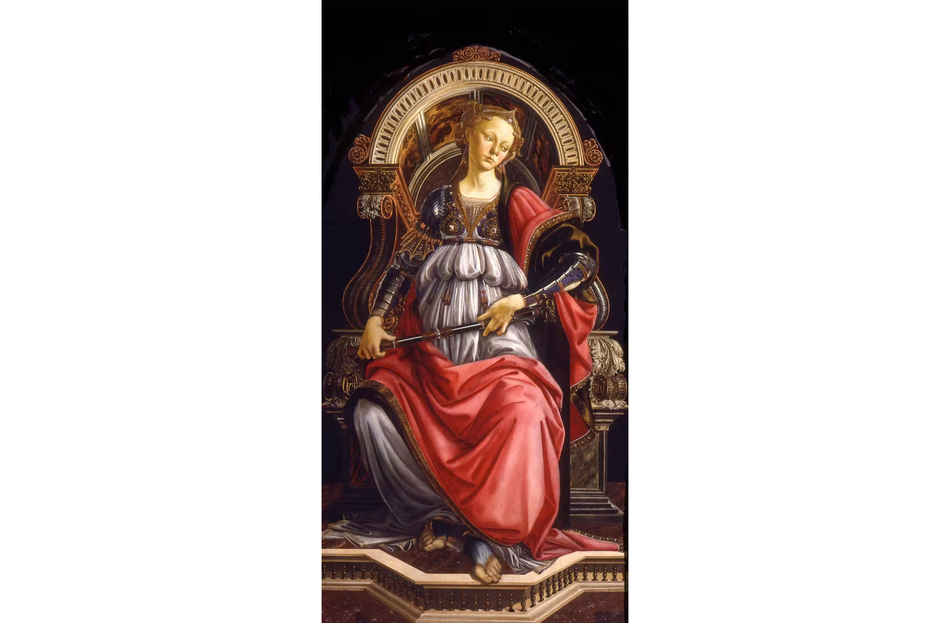The year is 2023 and I’m in the middle of a depressive episode that almost finished me off. My cat, Stanley—an affectionate orange tomcat we adopted when I was 12 years old has recently passed away. My Nan—who moved to Matlock when I was three to help raise me—is in the hospital, having just had a seizure. I am in Italy, fleeing my grief and tucking myself away in the rolling hills of Tarquinia.
It was October and I was there with two friends, weathering the emotional storm through sunshine and copious quantities of pasta. After spending most of our time around small towns and villages, gazing at all the Etruscan necropolises, we opted for a day in the city—specifically, Florence.
I’d been on FaceTime to my Nan the night before, regaling her with Etruscan history. She looked back at me and nodded along from her bed. Every day I felt guilty that I was in Italy and not visiting her in the Edinburgh hospital she’d been sequestered to. But my family urged me to take the opportunity to go away—and assured me that there would be time to see her as soon as I landed back on British soil.
Unfortunately, no amount of pasta or Mediterranean sunshine could abate my gnawing depression, tinged as it was with impending grief. It felt as if my soul was sick and the prognosis far from promising.
Until, until… one day, my academic friends had some academic mission to fulfil, so I wandered over to the Uffizi gallery on my own. Unsurprisingly it was teeming with tourists, so I put in some earphones in an effort to keep myself in a grounded, self-contained bubble.
Florence and the Machine’s Dance Fever, one of my ultimate comfort albums, served as the perfect soundtrack as I floated between marble sculptures, allowing the crowds of tourists and statues to blur into one. Ancient and modern, all in one room. It’s that collision of time, unique to galleries, museums and historic cities that’s always drawn me to them.
Eventually I found myself, by chance, in front of the Seven Virtues. A nearby plaque informed me that this series of tempera on wood panels was made to decorate a hall in the Palazzo della Signoria, next door to the Uffizi. On each panel is a feminine personification of three Christian values—Faith, Hope and Charity—and four worldly ones—Temperance, Prudence, Fortitude and Justice. Six were painted by Piero del Pollaiuolo, while one of them, Fortitude, was the first recorded commission of a then little-known artist called Sandro Botticelli, completed in 1479 when he was just 25.
At the time I knew little of the art or the artist—and yet still I found myself drawn, instinctively, to the Botticelli.
Carving out a space for myself in front of her, I stared up at this formidably armoured woman holding a “rulers’ sceptre”, her feminine dress peeking out from between the chinks of her armour. I was struck by her face. While her dress and sceptre certainly signified strength, her expression seemed detached and ambivalent, her hands limp. Characteristic of Botticelli’s portraits of women, she was staring, languidly and with melancholy, into the middle distance. My own gaze then travelled down, where I caught first sight of her name. Fortitude! Resilience, strength, perseverance—all attributes I felt were beginning to wane within myself.
I found comfort in the face of this woman, in her expression. She looked sad, gazing listlessly at nothing in particular. But she looked strong, too. She doesn’t grip her sceptre, as you might expect “fortitude” to do—she doesn’t appear ready to fight. Her stance is docile, neither offensive nor defensive. If I had to ascribe a more active verb to her (beyond “sitting” or “looking”), I would say she’s withstanding. And depression is something you withstand, endure—contrary to what people say about “battling” mental illness. You can’t “fight” what is happening inside your own mind and, to be honest, there’s rarely anything proactive one can do to “cure” a depressive episode. As I told myself, repeatedly, “the only way through is through”—and I got the sense that Botticelli’s Fortitude felt the same way.
Since that trip to Italy, I’ve had her as my lockscreen. How bizarre that a painting of that spiritual magnitude, steeped in that much history, has occupied the blue-lit rectangle that keeps me perpetually connected to the world.
Botticelli and his contemporaries could never have conceived of such things as a “lock screen”, or even a phone. But there she is, an old virtue mixed with contemporary life, a token of fortitude, serving as a reminder to keep marching on.















